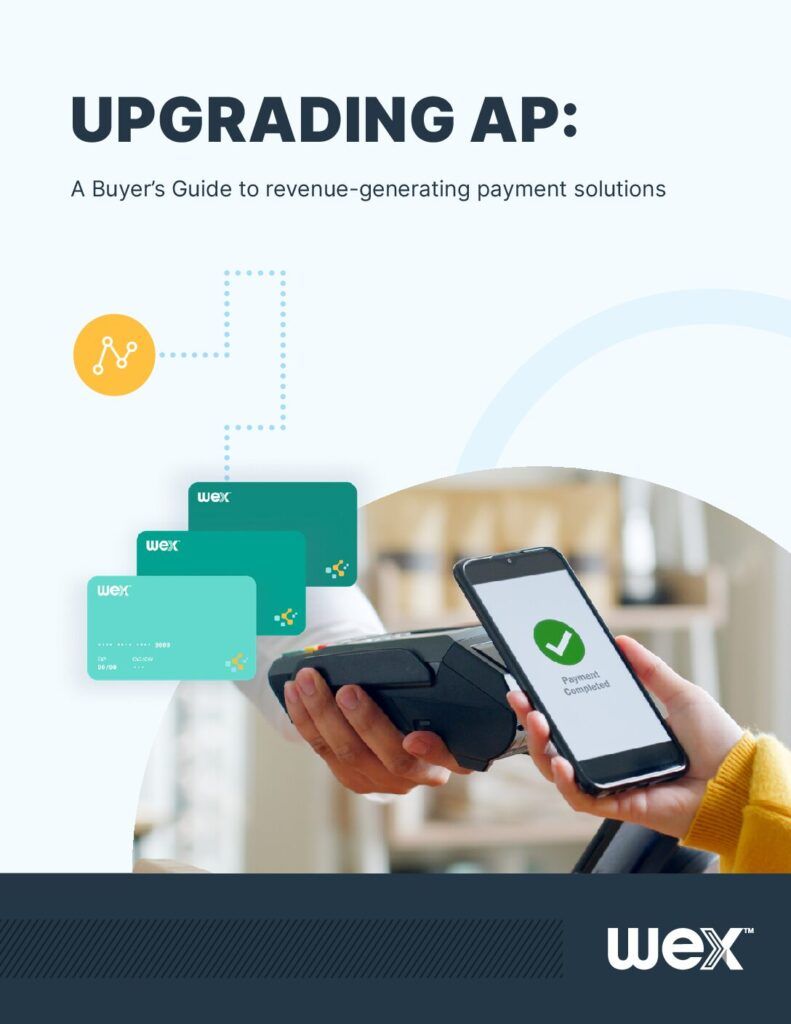Stay connected
Subscribe to our corporate payments blog to stay on top of payment innovations.

Streamlining accounts payable (AP) processes is a key strategy to optimize operational costs. Traditional methods, reliant on checks and physical cards, often have hidden expenses associated with manual tasks, fraud vulnerability, and delayed payments. Virtual cards are emerging as a powerful solution. They are the fastest growing B2B payment method, according to Juniper Research. Here are some reasons why:

Download our AP Buyer’s Guide to compare options, see how virtual cards stack up, and find the best fit for your accounts receivable and payable workflow
Virtual card costs are more manageable because they offer great control over business expenditures. Each card is generated for a specific transaction or vendor, allowing businesses to set precise spending limits and expiration dates. This level of control ensures that employees and departments adhere to budget constraints and prevents unauthorized expenditures.
Businesses can set spending caps tailored to each transaction, reducing the risk of overspending. This ability to customize spending limits helps to enforce budgetary discipline across departments, thus optimizing virtual card costs.
Virtual cards can be generated for single-use or recurring payments, offering flexibility while maintaining control. This specificity ensures that funds are used only for their intended purpose, reducing the chances of misuse.
Transactions made with virtual cards can be tracked in real-time, providing immediate visibility into spending patterns and helping to identify potential issues early. This real-time data allows for swift corrective actions, enhancing financial oversight and managing virtual card costs effectively.
Fraud is a significant concern for businesses, and traditional payment methods often leave them vulnerable to various threats. 52% of large companies in the past two years have experienced some type of fraud. Virtual cards, however, are designed with robust security features that help reduce the risk of fraud.
Each virtual card has a unique number that can be used only once or for a specific vendor, minimizing the risk of card number theft. This single-use nature makes it difficult for fraudsters to reuse card information, protecting virtual card costs from fraud-related losses.
With predefined spending limits and expiration dates, the potential cost is contained, even if a virtual card is compromised. This containment strategy ensures that the financial impact of fraud is minimized.
Many virtual card providers offer additional security measures such as tokenization and encryption, further safeguarding transactions. These features protect sensitive information from unauthorized access and cyber threats.
Managing corporate expenses through traditional methods often involves a significant amount of administrative work, from processing invoices to reconciling accounts. Virtual cards simplify these processes, leading to considerable savings in time and money.
Virtual card transactions can be automatically recorded and categorized, reducing the need for manual data entry and minimizing errors. This automation streamlines the expense reporting process, allowing staff to focus on more strategic tasks and optimizing virtual card costs.
With real-time transaction tracking, the reconciliation process becomes faster and more accurate, freeing up valuable resources for other tasks. This efficiency reduces the time and effort required for month-end closing activities.
The elimination of physical receipts and invoices not only saves on paper costs, but also helps businesses move towards more sustainable practices. Digital records are easier to store, search, and retrieve, enhancing overall administrative efficiency.
Beyond the core advantages of tighter controls, reduced fraud, and decreased administrative costs, virtual cards also offer several other benefits that can contribute to overall business efficiency:
Faster payments and streamlined processes can enhance relationships with vendors, potentially leading to better terms and discounts. Timely payments build trust and can result in preferential treatment or negotiation leverage.
Detailed transaction data provides deeper insights into spending trends, helping businesses make more informed financial decisions. This visibility supports better budgeting, forecasting, and strategic planning, ensuring that virtual card costs remain controlled.
As businesses grow, virtual cards can easily scale to meet increasing transaction volumes without the need for additional physical cards. This scalability ensures that payment processes remain efficient regardless of business size.
For more insights and updates on corporate payments, check out:
Learn more about how WEX payment solutions can be tailored to your business, so you can accelerate and streamline operations while creating lasting growth and success for your organization.
Stay up to date on the latest in business payments by subscribing to our blog! Simply hit the “Subscribe” button above or submit your email address in the form below.
The information in this blog post is for educational purposes only. It is not legal, tax or investment advice. For legal, tax or investment advice, you should consult your own legal counsel, tax, and investment advisers.
Subscribe to our corporate payments blog to stay on top of payment innovations.